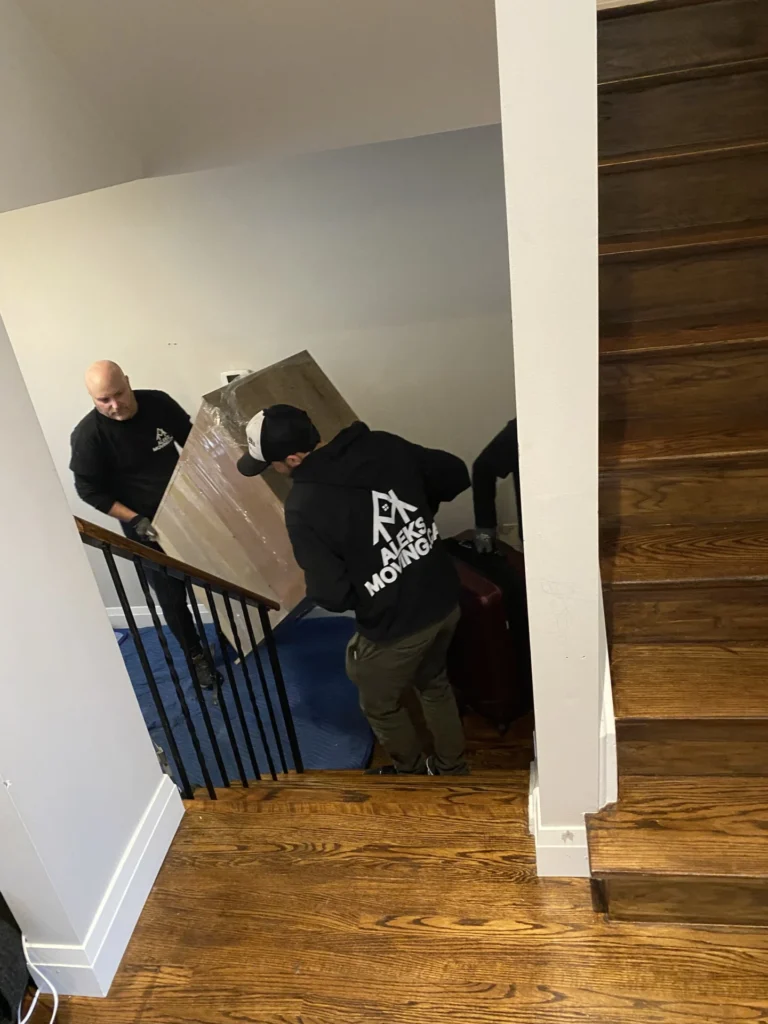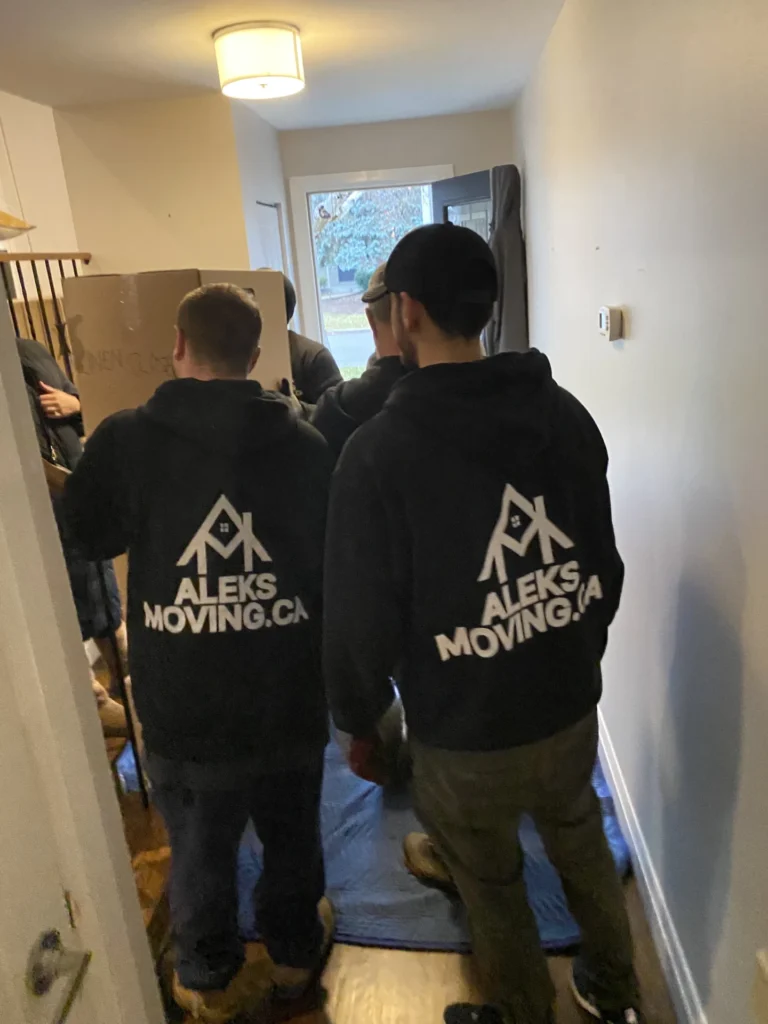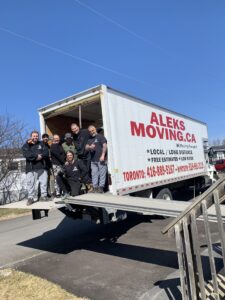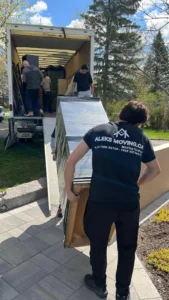Moving can be both exciting and stressful. Whether you’re moving across town or across the country, staying organized throughout the process is essential for a smooth and successful move. Based on years of experience and helpful tips, we’ve compiled the ultimate moving checklist to help you stay on track, reduce stress, and make the process as smooth as possible. Read on to discover How to Pack for a House Move Checklist, and how to make your move easier and faster, with expert advice on packing, labeling, and organizing.
What Order to Pack Your House When Moving?

One of the first steps in organizing your move is figuring out the order in which to pack your house. While each move is different, there’s a general rule of thumb for packing that ensures your belongings are organized and accessible during the moving process. Here’s a suggested order to pack your house:
Start with Non-Essential Items
Begin packing items that you use infrequently or that aren’t essential for daily life. These could include seasonal clothing, holiday decorations, books, artwork, or spare furniture. By starting with these items, you’ll free up space and be able to pack the essentials closer to your move date.
Pack Rooms You Don’t Use Regularly
Once you’ve taken care of non-essentials, move on to rooms or spaces that you don’t use every day. These could include guest rooms, storage areas, basements, or attics. Be sure to pack away items that won’t be needed until after the move.
Pack Less Frequently Used Items from the Kitchen
Items in the kitchen, like bulky appliances, extra cookware, or serving dishes, can be packed well in advance. Leave out the essentials you’ll need for the last few days—like your toaster, coffee maker, and a few dishes.
Start with Bedrooms and Living Areas
Next, begin packing bedrooms and living rooms, especially those used the least. It’s essential to save your essentials for last, so make sure you’ve packed your daily necessities in “open me first” boxes.
Pack the Kitchen and Bathrooms Last
These rooms should be packed last because they contain items you’ll need right up until the moving day. Make sure to set aside a few necessary kitchen items, like a couple of pans or utensils, as well as toiletries, soap, and towels for your final days in the old house.
How Do I Start Packing to Move House?
Starting the packing process can feel overwhelming, but breaking it down into smaller steps makes the task more manageable. Here’s how to begin:
- Gather Packing Materials Before you start, gather all the materials you’ll need—boxes, packing tape, bubble wrap, packing peanuts, and markers. Make sure you have enough to get you through the packing process, as running out of materials mid-way can slow you down.
- Create an Inventory of Items As you begin packing, make a list of all the items in each room. This inventory will help you stay organized and provide a reference if any items go missing during the move. Plus, it’ll help you know exactly what you have to unpack in your new home.
- Start with One Room at a Time Packing one room at a time allows you to stay focused and organized. Begin with items that you don’t need immediately, and pack them up carefully to avoid damage during transport. Label each box with the room it belongs to and a brief description of its contents.
- Label Your Boxes Clearly Clear labeling is key to keeping everything organized during the move. Write the contents of each box and its designated room on the outside. Consider using different colored labels for each room to make it easy for movers to know where each box belongs.
What is the Fastest Way to Pack a Whole House?
Packing your entire house can feel like a daunting task, but there are strategies to help you do it quickly and efficiently:
- Hire Professional Help If time is a concern, consider hiring professional movers to help with packing. They can bring the right packing materials, handle fragile items with care, and pack faster than you would on your own.
- Use Efficient Packing Methods For fast packing, use a system that works for you. For instance, you can pack similar items together, like books or dishes, in small boxes so they’re easy to move. Use larger boxes for lighter, bulkier items like linens or clothing. Don’t waste time with excess packing materials—use towels or blankets to cushion delicate items.
- Get the Family Involved If you’re moving with a family, enlist their help. Assign each person specific tasks, such as packing their own belongings, cleaning up certain rooms, or sorting through old items to donate or discard.
- Stay Focused on the Big Picture Instead of getting bogged down in the minutiae of every box, stay focused on the overall goal: getting your items packed and ready to move. Prioritize packing and cleaning tasks that need to be completed before moving day.
How Soon Should I Start Packing for a Move?
The sooner you start, the easier it will be to handle the moving process. Here’s a general timeline to follow:
- Start 6-8 Weeks Before the Move Begin by decluttering and sorting through your belongings. Get rid of items you no longer need or use to lighten the load. This is also a good time to start packing non-essential items, such as seasonal decorations or extra furniture.
- 4-6 Weeks Before the Move Begin packing up less-used rooms, such as guest rooms, storage areas, or the attic. Start organizing your moving binder, where you’ll keep track of your boxes, moving schedule, and any necessary documents.
- 2-4 Weeks Before the Move At this point, start packing up more frequently used items, such as kitchen gadgets, bathroom essentials, and clothing. If possible, schedule a moving truck and confirm the details with your movers.
- 1 Week Before the Move As the move date approaches, finish packing any remaining items, including personal items you use every day. Keep your “open me first” boxes handy, and don’t forget to pack a suitcase with clothes and toiletries for the first few days in your new home.
Create a Box Index
A box index is crucial for staying organized. Here’s how it works:
- Write the box number on each box and list the contents in your moving binder. This will make it easy to find specific items once you’ve moved to your new home.
- Keep a master list of all your boxes so you can quickly check if something goes missing. When everything is labeled and indexed, it’s much easier to unpack.
The 85% Rule
Let’s face it—packing can be stressful, and things won’t always go perfectly. The “85% rule” states that it’s okay if 85% of your boxes are organized and labeled well, even if the last 15% are thrown together quickly. Focus on getting most of your items packed and ready, and don’t stress over the small stuff.
Open Me First Boxes
Don’t forget to pack 2-3 “open me first” boxes. These boxes should contain everything you’ll need on your first night in the new house. Think bedding, toiletries, a few kitchen essentials, and a change of clothes. By keeping these essentials packed separately, you won’t have to rummage through dozens of boxes to find what you need.
Use Extra Baskets and Bins
Instead of buying extra boxes, repurpose any baskets, bins, or storage containers you already own. They can help you pack heavy or awkward items, like books or shoes, more efficiently. Use smaller bins for items you don’t want to overload, and larger bins for bulky, lightweight items.
Plastic Laundry Baskets
Plastic laundry baskets are perfect for packing plants, fragile items, or oddly shaped things. Their open design allows you to transport taller items without worrying about damaging them. These baskets are easy to transport, and they’re often available in your home already.
Purchase Tubs
Plastic tubs are more durable and reusable than moving boxes. They stack easily, don’t require tape, and are perfect for long-term storage. Using tubs can help make the moving process a lot smoother, especially when it comes to packing and unpacking.
Group Large Wall Items
Prepare large items, such as mirrors, artwork, and picture frames, well in advance. Group them together and keep them safe for transport. These items will likely need to be handled with care, so having them ready will save time on moving day.
Use Brightly Colored Labels
To make unpacking easier, use brightly colored labels for each room in your new home. Movers will be able to easily identify where each box belongs, reducing the time spent searching for items during the move.
Label Tops and Sides
Label both the top and side of your boxes. This allows you to see the contents at a glance and makes stacking boxes easier. It also makes it easier for the movers to grab the right box without twisting to see the label.
Bonus Tips for Parents
If you have young children, consider purchasing new toys before the move. Tuck them away and give them to your kids once you’ve arrived at your new home. This will keep them entertained and happy while you focus on unpacking and setting up.

Conclusion
Moving doesn’t have to be overwhelming. With a well-organized moving binder, a solid packing strategy, and a few helpful tips, you can make your move smoother and less stressful. Remember to start packing early, label everything clearly, and focus on packing the essentials last.
At Aleks Moving, we understand that every move is unique, and we’re here to help make your transition as smooth as possible. If you need professional Packing Service with your next move, don’t hesitate to contact us. Our experienced team will ensure everything is packed and transported with care, so you can focus on settling into your new home. Contact Aleks Moving for all your moving needs today!
Follow our social media pages below:
Find out more articles that can help you below:
Moving Checklist: Everything You Need to Know Before You Pack for Your Mississauga Move



